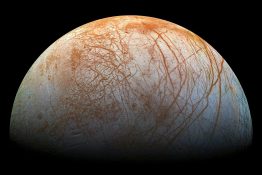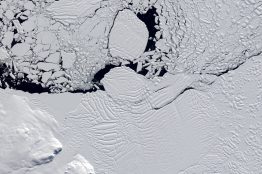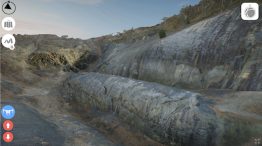The red streaks crisscrossing the surface of Europa, one of Jupiter’s moons, are striking. Scientists suspect it is a frozen mixture of water and salts, but its chemical signature is mysterious because it matches no known substance on Earth. An international team led by the University of Washington may have solved the puzzle with the discovery of a new type of solid crystal that forms when water and table salt combine in cold and high-pressure conditions.
Read more at UW News »UW experts discuss the earthquake in Turkey and Syria
Three University of Washington experts have provided the following quotes in response to the magnitude 7.8 earthquake that struck Turkey and Syria on Monday morning. Harold Tobin is director of the Pacific Northwest Seismic Network and a UW professor of Earth and space sciences. Tobin studies tectonic plate boundaries with a focus on how faults work and the conditions inside them that lead to earthquakes.
Read more at UW News »The importance of the atmosphere and ocean in determining the fate of Antarctica
An international team of researchers has combined satellite imagery and climate and ocean records to obtain the most detailed understanding yet of how the West Antarctic Ice Sheet — which contains enough ice to raise global sea level by 11 feet, or 3.3 meters — is responding to climate change. The researchers, from the University of Washington, the University of Cambridge and the University of Edinburgh, found that the pace and extent of ice destabilization along West Antarctica’s coast varies according to differences in regional climate.
Read more at UW News »UW brings field geology to students with ‘Virtual Field Geology’
University of Washington geologists had set out to create computer-based field experiences long before the COVID-19 pandemic hit. Juliet Crider, a UW associate professor of Earth and space sciences, first got a grant from the National Science Foundation to send a former graduate student and a drone to photograph an iconic Pennsylvania geological site and pilot a new approach to field geology.
Read more at UW News »Deepest scientific ocean drilling effort sheds light on Japan’s next ‘big one’
Scientists who drilled deeper into an undersea earthquake fault than ever before have found that the tectonic stress in Japan’s Nankai subduction zone is less than expected. The results of the study led by the University of Washington and the University of Texas at Austin, published Sept. 5 in Geology, are a puzzle, since the fault produces a great earthquake almost every century and was thought to be building for another big one.
Read more at UW News »





